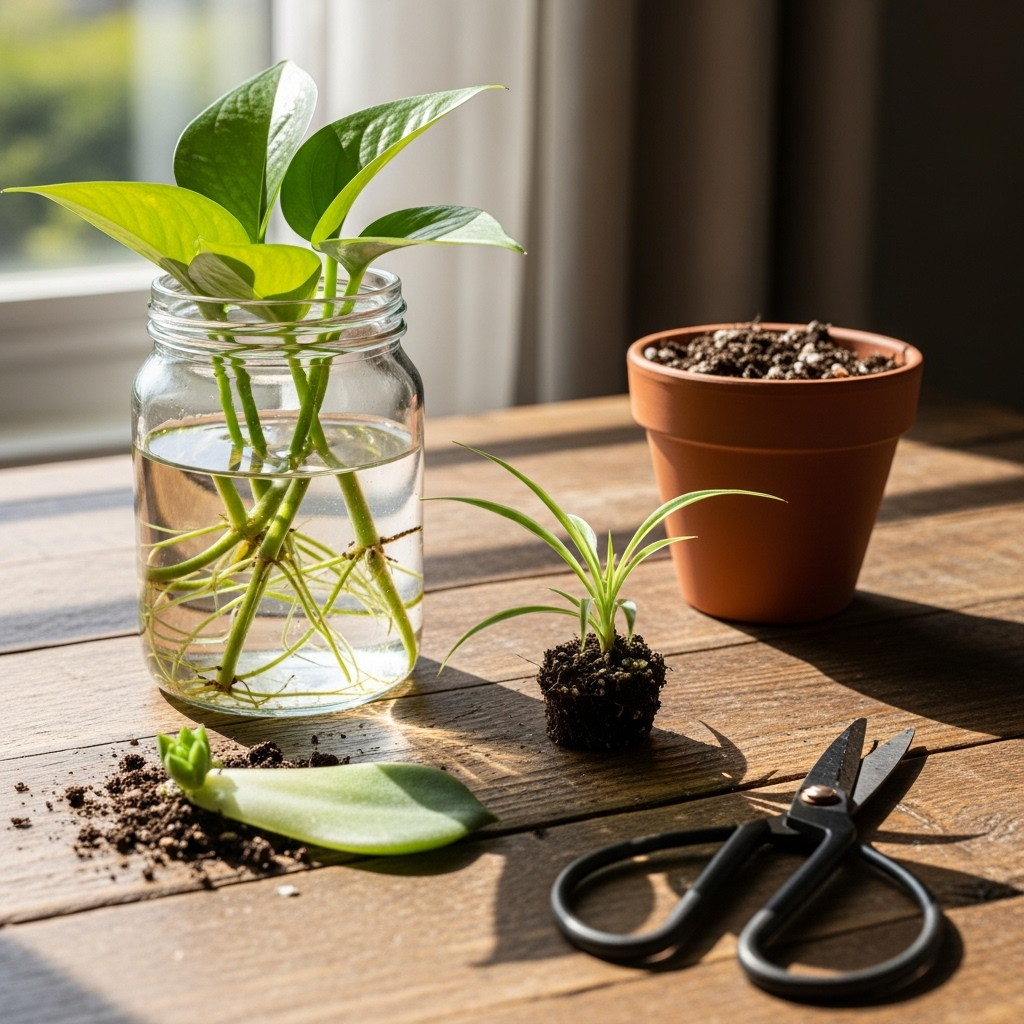Propagation is a simple way to grow new plants from the ones you already have. It saves money, multiplies your collection, and is fun to do. With just a few steps, you can turn cuttings or leaves into thriving plants.
Methods of Propagation
1. Stem Cuttings
- Works well with pothos, philodendrons, and mint.
- Cut a healthy stem just below a leaf node.
- Place it in water until roots grow, then transfer to soil.
2. Leaf Cuttings
- Perfect for succulents like jade or echeveria.
- Gently remove a healthy leaf.
- Let it dry for a day, then place on top of soil.
- Roots and new plants will sprout from the leaf.
3. Division
- Great for ferns, peace lilies, or snake plants.
- Gently remove the plant from its pot.
- Separate roots into smaller sections and repot.
4. Offshoots (Pups)
- Spider plants and aloe vera produce small baby plants.
- Remove them and place in water or soil.
5. Air Layering
- Used for larger plants like rubber plants.
- Make a small cut on a stem, wrap it with moist moss, and cover with plastic.
- Once roots grow, cut and plant separately.
Tips for Success
- Always use clean scissors to avoid infections.
- Place new cuttings in bright, indirect light.
- Keep soil or water slightly moist, not soggy.
- Be patient—roots can take days to weeks to form.
Benefits of Propagation
- Cost-effective way to expand your garden.
- Great for sharing plants with friends.
- Keeps original plants healthier by pruning.
Final Thoughts: New Life From Old Plants
Propagation is a rewarding process that lets you create more greenery with little effort. Whether through cuttings, leaves, or division, you’ll see new plants grow and feel proud of your expanding indoor jungle.

